
A microscopic view of the carbonate islands.
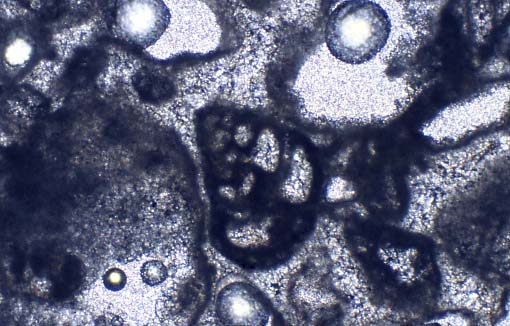
Most of us who live on the coast can lay to claim that at some point we have been to the beach. Unless you are terrified of water, there is a natural pull, a curiosity, what ever it is called, to head to the waters edge. However, of those of us who have gone, have you ever grab a hand full of sand and put it under a dissecting microscope and had a look at what is all in there? No, I do not wear thick glasses with a bit of tape in the middle holding them together. For those who have, I am sure that you will agree with me that it was an eye opening experience. The sands that make up the beach and eventually the rocks of The Bahamas are no less fascinating if not hypnotic. Pearly white, shiny and absolutely breath taking.
One of the more spectacular forms of carbonate sand found to form in The Bahamas are ooids. (figure below). Rumor has it that The Bahamas may actually produce some of the most beautiful ooids and certainly the majority of them, earning the name, ‘the ooid factory of modern carbonate production.’ Ooids are the rounded carbonate particles that seem to form under very specific conditions; shallow, warm water platforms where wave action is gentle.
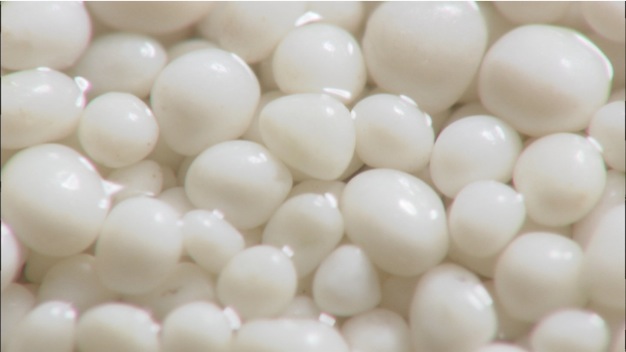
The calcium carbonate that makes up the ooids is precipitated out of the sea water. The water around the islands is super saturated with dissolved calcium carbonate and under the right condition, this carbonate can nucleate on fecal pellets, bacteria, tiny bits of carbonate sands, what ever is handy. I have seen crust form on tin fishnet buoys. These particles continue to accumulate calcium carbonate while these same grains are being gently tumbled on the shallow warm water platforms giving them their round shape. It is like a mineral shop were they take dull looking stones and let them tumble on a mechanical table for months and eventually the stones become shinny and are later sold for 25 cents in some mineral shop.
Ooids will only grow to a size of a couple of millimetres in The Bahamas. If they get to big, they can no longer be moved in the gentle environment in which they form and will settle out. The sands in The Bahamas are made of other forms of carbonate sands. There are sands composed of shells, shell bits, carbonate mud, and foraminifera, a heterotrophs with pseudopodia (false feet). These false feet are temporary cytoplasmic extrusions that aid in locomotion and capturing or sensing of prey.
In the centre of the photo just below is a thin section view of a carbonate rock with a foram in the centre. This sample is from San Salvador Island.
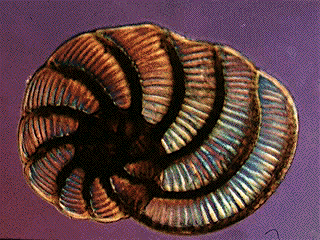
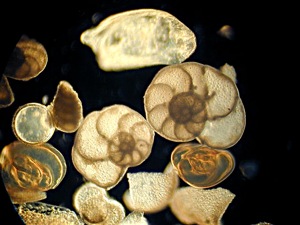
Photo: Google
Photo: Google
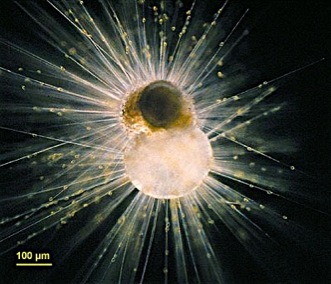
Photo: Google
Here is a picture of a living foram with its pseudopodia radiating out around it.
So what do these different carbonate sands have to do with cave development? We think a lot. Results from my masters work and subsequent work has brought to our attention that horizontal caves that are currently above sea level and most likely had the majority of their enlargement occur when sea level was 6 metres higher during the last major interglacial period about 125 ka ,form almost exclusively in bioclastic rock; rock that are composed of the shelly remains of the formally living. The currently flooded caves of today that have checked, reveal the same results. Why might that be? If you look at the tests of the forams and the highly decorative nature of many of the shells that can be found in The Bahamas, we can see that the surface volume ratio is much higher then in, for instance, an ooid. What this all means is that highly ornate shells and forams will have more surface area to react to local water chemistry. We also think that in dealing with the formally living shell materials, we are also potentially harboring more organics at the time of burial, a potential for more bacteria to have been buried with the deposit. The more bacteria there are, the more likely that the carbonate grains would have been exposed to a constant source of acid and the formation of pores and subsequent larger pores would have been well underway at the time of burial.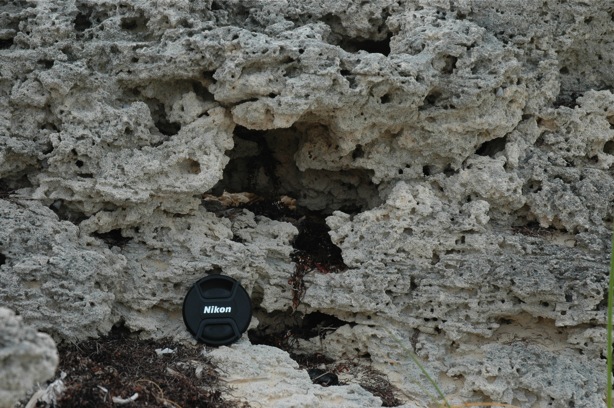

As can be partially seen in the picture above, this bioclastic rock is almost hollow. The dark gray or charcoal colour of the surface of the rock is cyanobacteria. Typically, the rock can be so covered in cyanobacteria that the subsequent colour is not gray but black. Bury this rock with more sand and submerge it in the ocean and give it another 15,000 years of time and maybe this site will be a cave of the future.
Other forms can be seen in the picture to your right directly above. The word, ‘foraminiferan,’ actually means “bearer of windows.” They acquired the name because parts of their test (shell) is thin and allows light to pass through as you can see in the picture to your left directly above.